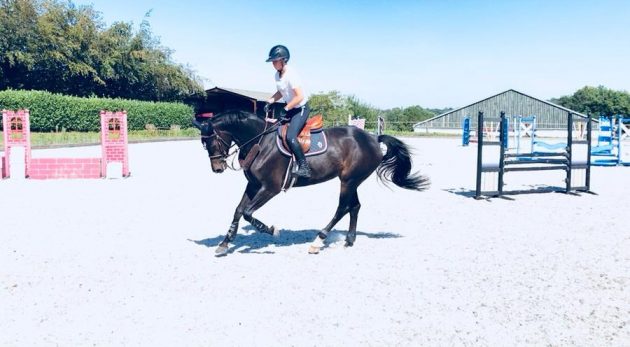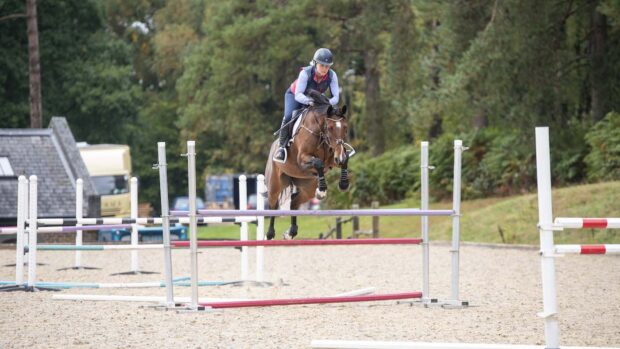You might hear a lot of trainers asking their students to establish a better showjumping canter, but what exactly is this and how can you achieve it? Here, Kirstie Leightley, an international showjumper who has been based with top rider Guy Williams in France, shares her top tips…
1. Transitions — It’s important for the horse to accept your hand and leg aids, practising going through your transitions at home will help develop this. Play around with it using transitions like walk to canter and canter to trot, ensuring the horse is working with you and not resisting your aid. A good exercise to help with this is to canter three strides, come down to trot for a few strides and then step back up to the canter and so on.
2. Lengthening and shortening – It’s important in the ring to be able to lengthen and shorten your stride as the courses are not always built on level distances. At home you can practice stepping up your canter work by lengthening for eight strides and then shortening for eight strides. This encourages the hind legs to come up under the body and creates the impulsion and self-carriage. When practising, you need to replicate the pace you want to achieve in the ring as most of your round will be in a medium canter not working canter.
3. Canter poles – Set up your canter poles so that they are four horse strides apart and approach these on both reins in a nice, even canter. Once you have established a good rhythm you can then adjust the number of strides you take stepping up on the three strides and closing down to five and so on, ensuring you use the same aids to encourage the same reaction you want to achieve in the ring.
4. Cavaletti – Place cavalleti (or a small fence) on a circle five horse strides apart. When doing this exercise, the horse must bend in accordance with the line you want to take which you can achieve by opening your inside hand over the fence encouraging the acceptance of your hand aid. If the horse begins to fall in, encourage the self-carriage with the outside hand and inside leg. Again, similar to the canter poles, once this is executed consistently, you can adjust the number of strides you take. This exercise also works on the rider’s own balance which is equally important to ensure horse and rider remain in good balance.
5. Flying changes – Once you and your horses are at a certain level and feel confident, flying changes are important to establish in order to maintain balance and rhythm in canter. This can be achieved by using large half turn then at the point of crossing the diagonal, squeeze with your inside leg at the girth to your outside rein, maintaining straightness in the process. Place a canter pole across the diagonal to encourage a less experienced horse to perform the same exercise.
You may also be interested in…

Does your horse rush when jumping? Tips from an expert to help solve this problem

7 jumping questions you thought were too obvious to ask
There are some jumping questions that seem too obvious to ask — so we've asked them for you...

5 top tips to help your horse concentrate
Does your horse struggle to concentrate? Follow these training tips to help keep his mind on the job
Horse & Hound magazine, out every Thursday, is packed with all the latest news and reports, as well as interviews, specials, nostalgia, vet and training advice. Find how you can enjoy the magazine delivered to your door every week, plus options to upgrade your subscription to access our online service that brings you breaking news and reports as well as other benefits.



